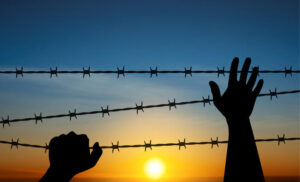 Over the years, I’ve learned a few things that have made me pause and marvel—”I never knew that about the Holocaust!” I’m hoping you will find these little-known Holocaust facts surprising. Please share any “little known facts” about the Holocaust that caused you to have an “ah ha” moment.
Over the years, I’ve learned a few things that have made me pause and marvel—”I never knew that about the Holocaust!” I’m hoping you will find these little-known Holocaust facts surprising. Please share any “little known facts” about the Holocaust that caused you to have an “ah ha” moment.
Surprising Holocaust Facts
- As a result of the enormous suffering inflicted by the Nazi regime, a number of European countries, including Germany, France and Austria, have enacted laws criminalizing both the denial of the Holocaust and the promotion of Nazi ideology.
- Publicly displaying Nazi symbols, such as the swastika are banned in Germany.
- Adolf Hitler’s book Mein Kampf, widely available in Russia, Romania, the US and the UK, cannot be purchased in Germany, Hungary, Israel, Latvia, Norway, Portugal, Sweden, or Switzerland.
- In the aftermath of the Holocaust, many countries decided that they could not leave it up to individual countries to protect the rights of their citizens. This initiative led to a modern human rights movement, beginning with the creation of the Universal Declaration of Human Rights in 1948.
- Although “Nazi” is short for “National Socialist German Worker’s Party,” the Nazis weren’t actually socialist or supportive of workers. These words were picked because they believed Germans would support them.
- The Nazis believed they would rule for 1,000 years. In actuality, they were in control of Germany for 12 years.
 The Nazi’s approach to citizenship laws and their restrictions on marriage between people of different “races” was inspired by race laws in the United States. Read Hitler’s American Model: The United States and the Making of Nazi Race Law by James Whitman to learn more.
The Nazi’s approach to citizenship laws and their restrictions on marriage between people of different “races” was inspired by race laws in the United States. Read Hitler’s American Model: The United States and the Making of Nazi Race Law by James Whitman to learn more.- Before the Holocaust, the global Jewish population was estimated to be 16.5 million (1939). Today, the number of Jewish people in the world is believed to be close to 16 million. It will still take decades for the global Jewish population to reach pre-World War II numbers.
- Adolf Hitler had plans to collect over a thousand Jewish artifacts to display in his “Museum of an Extinct Race” after the war.
- Researchers have now cataloged over 42,500 Nazi ghettos and camps throughout Europe, from 1933 to 1945. These range from slave labor camps, Jewish ghettos, concentration camps, and prisoner-of-war camps, as well as thousands of other camps.
The Importance of Sharing Holocaust Facts
Today, thousands of revisionists seek to deny the occurrence of the Holocaust and the death and suffering of millions of people during its time. Knowing the above Holocaust facts allows the tragedy of the event to be remembered and honors the lives of all who went through it.
Learn more about the Holocaust by visiting the Holocaust Memorial Center today.




